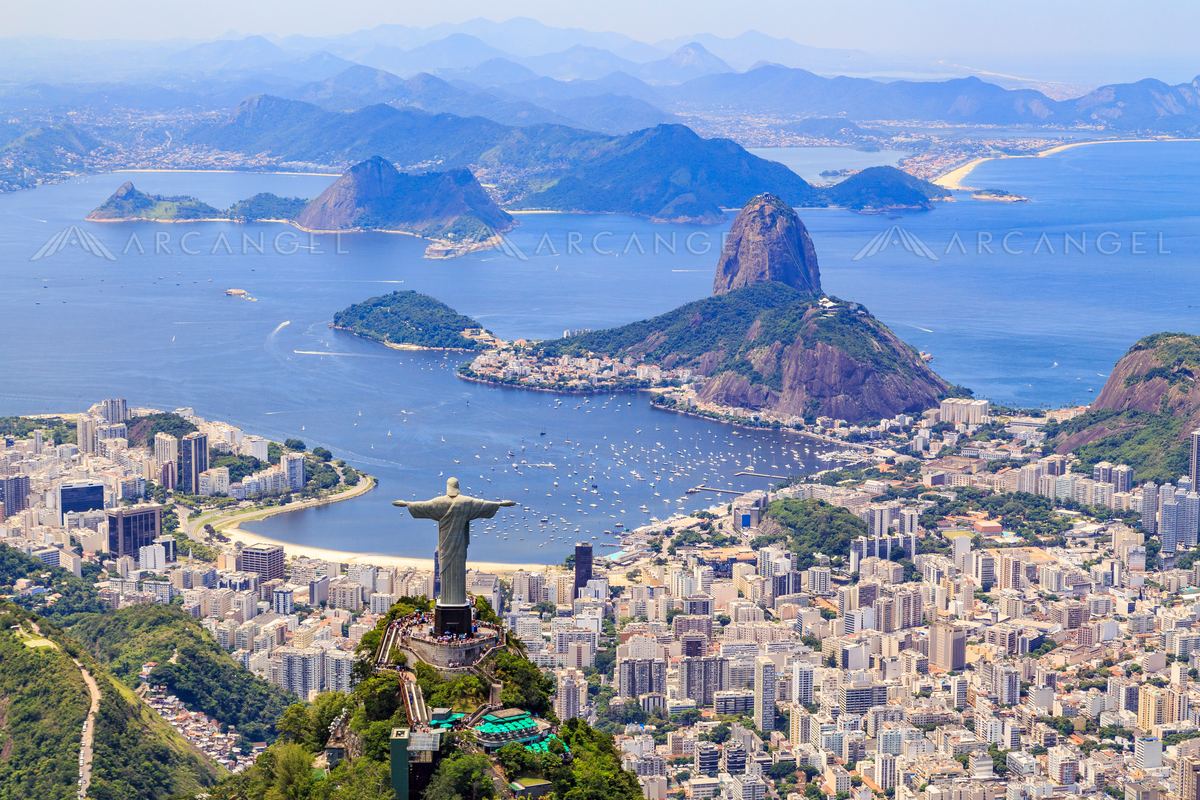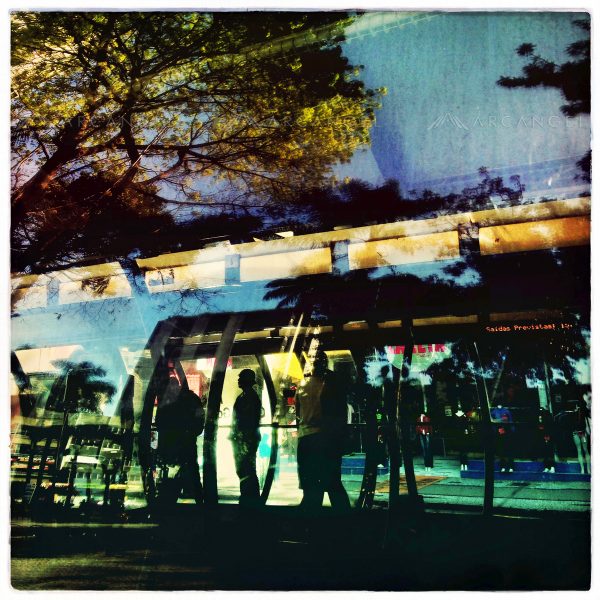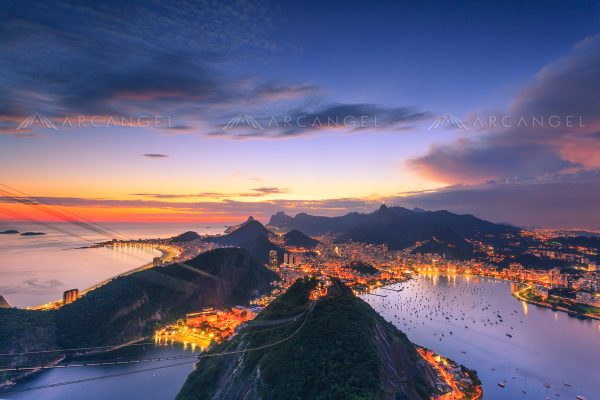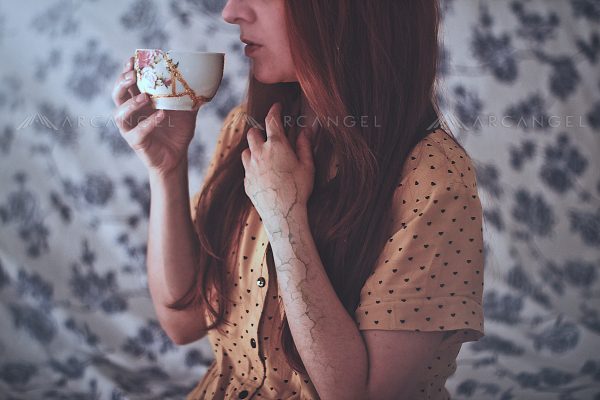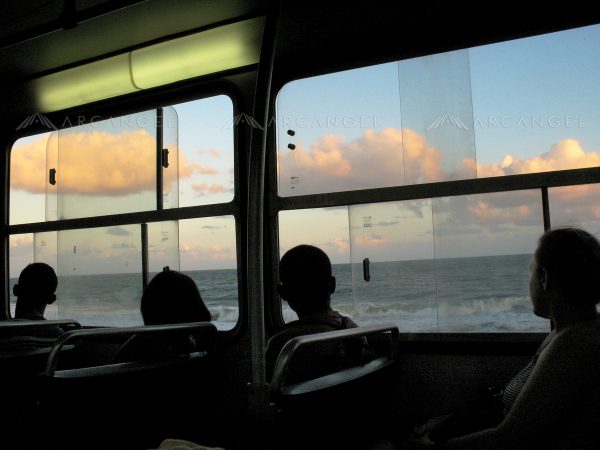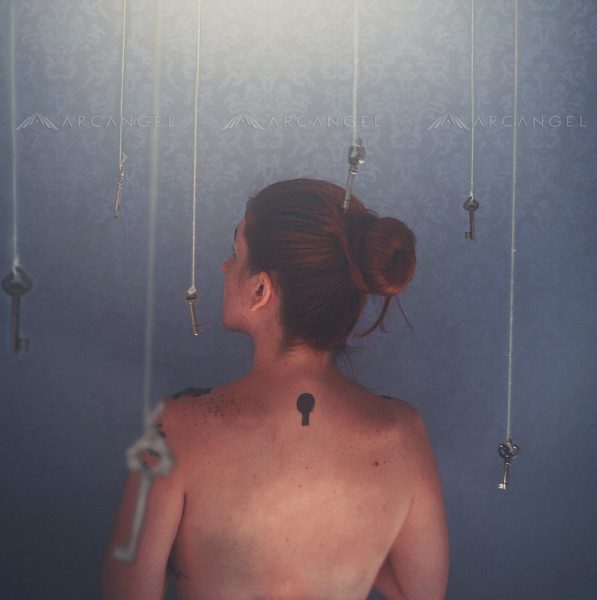Four new talents based in Brazil:Contributors Interview
Lately in Arcangel we have noticed how new brazilian photographers are contributing with beautiful and fascinating images. The concepts and style are very different, from street photography to surreal. We wanted to speak with four of these talents and put the evidences on the table that make them different.
Product & food photography: Sarah Saratonina, Arcangel Portfolio
Travel & Landscape photography: Yuri Barichivich, Arcangel Portfolio
Street Photography: Lester Weiss, Arcangel Portfolio
Surreal Photography: Diogo Costta, Arcangel Portfolio
Tell us a little bit about yourself:
Sara Saratonina: My name is Sarah and I am a 34 years old professional photographer. Food and still life are my favourite subjects but I am a big fan of creative portraits too.
Yuri Barichivich: I’m 26 years old, communications grad with a major in journalism and i was formally taught photography then i was studying to be a journalist. I started photographing political events and doing photojournalism, but a few years later i started doing more and more landscape photography. Eventually i started doing it full time and got specialized in long exposure landscapes, travel photography and fine art.
Lester Weiss: During my first year in college, I met a photography student who showed me a book by Robert Frank, “The Americans”, which for me was a revelation. I had never seen documentary images that felt so singularly personal before. It showed me that photography could express a kind of poetry that I felt could not be achieved with words. At the time, my creative outlet was writing, which was a process that required no technical skills. And since I felt intimidated by anything technically challenging, it was many years before I tried my hand at photography. When I was 25 and finally had the courage to take on the technical requirements, I decided to learn more about photography. A friend and I bought decent quality SLR cameras and started taking photo strolls together. We also started looking together at the work of great photographers, learning more about the medium, observing and analyzing images, and basically beginning to visually educate ourselves. So, in a sense we were an informal “school” of two “self-taught” novices. Another friend gave us a demonstration on how to use the darkroom. We took turns using the darkroom and analyzed the results together. It helped us improve quickly. And from that start, my love and appreciation for photography grew. For the next several years I mostly worked in black and white, developed my own film and printed the pictures in a darkroom, concentrating on street photography and portraits. When I was 30 I began taking graduate level classes at San Francisco State University. For the next few years, I worked on some documentary projects, including a project about a community of street people in downtown San Francisco and another devoted to documenting the members of a recreational club in Brooklyn, New York. During those years I also had a few small exhibitions.
In the late 1980s, I began to learn about digital photography, when applications like Photoshop were just becoming accessible on personal computers. I taught myself Photoshop and began to use it to play around with scanned versions of my images. Over time I became very skilled at using Photoshop and by the mid-1990s, I began working professionally in graphic production jobs using Photoshop. After a while, I was too busy with work to spend much time on my own photography, which I mostly abandoned for several years.
At the end of 2002, I was laid off from a job and suddenly had a lot of free time. After having spent a number of years using Photoshop to improve the quality of other photographers’ work, I decided that it was time to start working on my own photography again. One of the first things I did was to buy my first digital camera. And after taking the camera out a few times and beginning to look at the results, I realized how much I had been missing photography and vowed to never lose my connection to it again. In the past fourteen years I have kept that promise, photographing and working on images with great regularity. In this period of time, I have had some exhibitions in galleries, cafes and other public spaces, and have also been invited to exhibit on a number of online art sites. I’ve had some of the images published in books, magazines and CDs. But most importantly, I’ve come to realize how important photography is to me. I especially love going out into the world to take pictures, a practice that functions as a meditative process for me. It’s a time where all of the worries and stress we carry around with us in our lives fades away, where the present moment is the only one that matters. But I also enjoy going home to look through the pictures, to discover what my camera has captured while I was walking around in a meditative, semi-dream state. Choosing the best pictures isn’t always so easy for me, but it’s part of the process. Also part of the process is post-production imaging work, which helps make the images come alive.
Whereas in my earlier period of photographic activity, I worked mostly in black and white and concentrated on documentary-style imagery, in my digital return I began to explore color photography and to delight in the more formal aspects of the medium. My process remained similar to my first phase of photography, in the sense that I continued to work like a street photographer, going out and looking for images without a preconception of what I might find. But in this new digital phase, my perspective and intent has changed. I am no longer as interested in examining and showing the world as it is. I have become more interested in the painterly aspects of photography, with greater awareness and emphasis given to light, shadow and texture, and to the reflectivity of surfaces, which create the “real-time” layering that occurs when shooting reflections. I still have an interest in making images of “reality”. But now the emphasis is more on discovering, revealing and expressing its mysteries, or in conveying feelings which are inexplicable in words. Beauty has become more of a preoccupation, although the beauty that I am after is often a paradoxical one extracted from real world conditions. Sometimes it’s a harsh beauty, or even what others might think of as ugly.
Diogo Costta: I am 25 years old, self-taught conceptual photographer who got into it by curiosity. I can say so because, ever since very young, I have been trying to turn the ordinary into extraordinary in many mediums from drawing to photography. I used to live in the very countryside up north in Brazil. It was a very rural setting in the state of Ceará and everything was harder than elsewhere due to lack of opportunities but the best part is that there was so much freedom in there. I remember creating worlds in our garden and fighting imaginary monsters and all this surely built who I am and how I see the world nowadays.
Although everything pointed to a career in the creativity field, I decided to move from Ceará to the largest city in Brazil, called São Paulo, to do a technologic graduation course. I recently graduated as a Systems Analyst but never left that creative part of me aside. That is why in the middle of graduation course I decided to change the photography hobby to a more frequent and serious journey. I have been building up my identity ever since 2010 and I think people can see and connect to it.
1-Two photographers that you admire.
SS: I love Ansel Adams because he said “You don’t take a photograph, you make it.” and I think the Russian Dina Belenko is the most creative person in the world, her work is awesome.
YB: Those would be Galen Rowell and the grand master Ansel Adams for the most part. Both being the most influential in my work and in my thought process when doing landscapes.
LW: There are too many photographers that I admire to mention here, but I’ll list three, whose work has been instrumental in my growth and development. Robert Frank was the photographer who inspired me to become a photographer. His work taught me that a poetic, expressive vision can and should be an integral part of the documentary process. Henri Cartier Bresson’s credo, “the decisive moment”, has always informed my process as a photographer. I believe that most of the best documentary work from photography’s classical era until now is based on Cartier Bresson’s vision. Lee Friedlander’s work taught me how to visually resolve complexity through a strong sense of composition. His work, I think, connects my earlier phase of photography to my more recent work.
DC: This is such a mean question! Hah It is hard to tell because I often admire photographs more than the owner of the copyright. Talking about people who uses photography to help himself or others I would say Brooke Shaden and Laura Makabresku because, besides from their talent, they inspire me to keep going everyday. They are more than photographers who have unique ideas, they make me dream while awake and push myself to create better concepts.
2-Two resources that give you ideas and inspire you.
SS: I use to visit museums and I like to see the house/studio of other artists. I saw the house that Magritte lived in Brussels and I have to say, I will never be the same after this rich experience!
LW: There are many resources stored up in my memory that inform my own image making process. My vision has been shaped through (1) studying and viewing art – in particular, modern art starting from the Impressionists and Cezanne, moving through the early 20th century avant-garde movements to more contemporary work; (2) cinema – I studied the history and theory of cinema when at the university and subsequently worked for many years at a film archive and museum, so I’ve seen a lot of great international films, and the cinematography and direction has been a great source of visual inspiration; and (3) great world literature, which I also studied at the university, and continued reading in subsequent years – in particular, the stories of Juan Luis Borges, Gabriel Garcia Marquez, Italo Calvino, Manual Puig, Julio Cortazar and many other writers whose work is related to “magical realism”. The internet now provides additional resources, since there are so many wonderful images to be found, both by well known and also by less known artists and photographers. (There’s unfortunately a lot of bad images to be found there, too!
YB: In resources i’m probably going to give a somewhat weird response. My two biggest resources are books and meditation, being the latter a important part of my photographic process overall. Photography is both my work and my therapy in some sense, where i can relax, calm myself and my own mind and see through a defined space, focusing on creating something else other than the reality in front of me.
DC: The first resource would definitely be people around me such as girlfriend, friends, family and even the ones I have only seen once wherever I go. I am a very reserved person and this usually makes me invisible to other people somehow, but it doesn’t stop them to be who they truly are while talking to me. When I notice something that stands out and makes me think I try to recreate it visually so other people can notice it too. The other resource would be the well known ones, for instance, movies, books, paintings.
3-Two things that you think are the hardest part of your work.
SS: The hardest part is to create something new and go away from the comfort zone. And I think that with so many photographers in the world, we have to create a distinctive feature in our work as signature work, it is also very difficult.
LW: I’m not a technical or studio photographer. I’m self-trained as a street photographer, where it is inevitable that you will fail much more often than succeed. You are working without any real control of your environment. All you have is your eye, which, of course, over time becomes more competent, and your reactions to the moment, to people you don’t know, motion that you cannot truly anticipate, and to light and shadows which change moment by moment… It’s a challenge to get good images with all the randomness of the ever changing conditions of the present moment. But that challenge is also a pleasure. But even harder than trying to capture those elusive “decisive moments”, is the process of selection and editing the picture that takes place after the shooting is over. When I am out in the world taking pictures it’s about momentary reactions. Thinking isn’t involved in the process. And I’m more comfortable when I’m not thinking! Later, when I am on my computer sifting through the results, a long period of reflection and analysis begins. Separating out the best images from the rest takes a considerable amount of time and it’s a process that fills me with doubt and second-guessing. I wish I had an editor whose judgment I trusted more than or as much as my own (when it comes to my own images). In the end we have to make our own decisions. But it’s a long, difficult process for me.
YB: Seeing not how things really are but what they could become and getting to the right locations in the right moment with the right weather. Both are sometimes frustrating things to do, the first mainly because if you are not having a good day or have a lot a pressure to finish the job it can really affect how you perceive your surroundings and limit your ability to capture the best possible picture. The latter because most of the time you can plan it perfectly but you can’t really control it, being at the mercy of the weather or traffic, for example.
DC: I think that it depends on the personality of each photographer but the hardest I find, at least for me, is to describe or show to the world what I do. I am bad with words. This makes every experience of description painful, also, each work is a very intimate part of me that I really care and don’t want to let go!
4-Two things that you think are the best part of your work.
SS: I can be creative every day and I can work with what I love every day. I am a very lucky person.
LW: As a photographer, I think the goal is initially to find out what one’s own vision is. Taking the pictures, working on them and reflecting on them is where you make that exploration, and consequently where you discover and refine your “voice” or “vision”. Through that discovery process, over a long period of time, one eventually develops a distinct visual style. I think (or at least hope) that my work has gotten to the level where it is distinctively mine, where you can see from the images a consistency and something particular that reveals in the images a stamp of my personal vision.
The hope is that the work is visually strong and that it elicits feelings in the people that are viewing it. I am not interested in expressing the obvious. I’m always trying to find some kind of poetry in what we customarily experience as ordinary scenes and places. I think that my best work stimulates people to see things differently, to see the magic or mystery that resides within the more obvious layer of reality we see so frequently that it causes us to stop looking, to stop seeing more than what is self-evident. The goal is to make photos that force us to pay more attention, and to thus be rewarded with a deepened and enriched perspective of the world around us.
YB: The time outside and the travels – meeting new locations, people and cultures – and the effect that my pictures can have on the people who see them. For damn sure these are the best parts of what i do with my photography. It’s really nice to see people getting some sort of joy by looking at your picture, remembering the place where they once were and inspiring happy memories, grinning about it just by looking at a simple picture.
DC: As I said, I love turning ordinary into extraordinary or noticing something very magical in the daily life. I am also fond of that moment when someone that you never seen before tells you that they connect with what you create so deeply.
5-Two people that you would love to work with (photographer, model, artist, signer, writer)
SS: Lady Gaga and Gisele Bundchen, 🙂
LW: I don’t have particular people to mention. But I would love to learn other ways of seeing and doing things. I’d love to spend time with good painters to watch their process, to see how they build up and change their composition, how they deal with light and color, how they bring together disparate elements, how they solve problems that arise when the work seems incomplete or unresolved, etc. If I could travel back in time, I would love to go on a photo shoot with Eugene Atget, or Henri Cartier Bresson or Robert Doisneau, or any other of the so many great artists in photography’s relatively brief history. I would love to go deeper into the complexity of humanity spending a day with Diane Arbus or go to a Gypsy village and watch Josef Koudelka interact with the people he documented there, etc.
YB: I mostly work alone, but i would love to grab a cup of coffee and chatting about landscape photography with both of the photographers that i already mention before, Galen Rowell and Ansel Adams. I’m sure that they would love to see how things evolved and how the possibilities are now even more endless.
DC: Oh, from the top of my head…Brooke Shaden, Keaton Henson, Neil Gaiman, Ólafur Arnalds, Jónsi, Aurora Aksnes, Elle Fanning…and so so many others.
6-Two emotions that you hope viewers get from your photography.
SS: I just love this and I don’t know why, or I like this because it is so beautiful.
LW: I am not trying to convey any specific emotions with the work. What I am looking for when I go out to take pictures are moments of “affirmation”, originating from seemingly insignificant moments, but where the random, disparate chance elements of reality unfolding before one’s eyes transform into a composition that feels perfectly “right”. In a sense what I am describing is Henri Cartier Bresson’s concept of the “decisive moment”. My hope is that the viewers feel that same sense of the “rightness” of the moment captured. That they feel the same kind of spark that I felt when I took the picture, the same sort of poetic awareness that makes the ordinary special. And that the moment in which they begin to feel it matches, in some sense, the moment of affirmation, the “yes” that I felt at the precise moment I was taking the picture.
YB: Joy and fulfilment.
DC: I wish people can see my images and realize that I don’t use expensive props or complex settings to create magical scenes. From that I want people to believe in meaningful magical moments in their lives. Also, many of my ideas come from when I am not so well and I still can find something that is beautiful out of it! So, I wish people can connect to it and do the same for themselves.
7-Two pros and two cons of Photoshop and other post edition apps.
SS: Pros: we can make our photos better when it is necessary (ops, I have just one pro) Cons: it is easy to over work an image and it looks ridiculous.
LW: Photoshop is a great tool, but it’s only as good as its user. I’ve been using it for 25 years and I still feel that there’s a lot more I could be doing with it to enhance my images. It’s great for improving the overall “look” of the image in conventional ways that mimic what you could do to images in the darkroom during the era of film photography. But it also makes overlaying multiple images much easier and in many ways gives you considerably more power than you had to alter images in the darkroom. I love Photoshop’s method of layering and compositing images.
The danger of Photoshop is that its misuse can just as easily lower the quality of the image or cause it to lose its sense of uniqueness. So it requires both skill and discipline to get the most out of the program. One has to be careful not to, for example, overuse the “artistic” plug-in filters that end up giving the image a “canned”, over-obvious look. Sometimes a processed look can actually make an image special, but more often the processed look weakens the “authenticity” of the image. And so I mostly avoid using Photoshop filters, especially the ones that create “artistic” effects. And in the rare instances that I do use them, I try to blend them into the image in order to obscure their use.
With hipstamatic apps on my cellphone, the use of filter-paper combinations have the same double-edged effect as Photoshop filters have on the image. These filter-paper combinations often add something special to the image, but their obviousness can also erode the image’s sense of uniqueness. If when you look at an image the first thing you notice is the filter or filter/paper combination it can be a distraction rather than an enhancement. I am more guilty of using these filter/paper combinations than I am of using Photoshop filters, because I like the feeling that some of them produce. To avoid losing the power or sense of immediacy of these images, I often make modifications afterwards in Photoshop to eliminate some of the more obvious by-products of the effects.
YB: Pros; Endless possibilities of achieving your desired result and being able to produce and reproduce new forms of photography, re-photography or digital imagery. I don’t really have any cons, I believe that manipulation always existed and it’s no novelty of the 21st century.
DC: The fact that you can create anything with it, even if it doesn’t exist, or adjust every aspect of photography in order to make it better are the pros I see. When it comes to cons, I can only see it in photojournalism, maybe.
8-Two pros and two cons of social media influence on photography these days.
SS: Pros: I can have some feedback about my work and I can see the work of others photographers. Cons: My work could be used in sites/blogs and I will never know or will never be paid 🙁
LW: A positive effect of social media is that it’s easier to find a place to show your imagery. But at the same time, because of the constant and overwhelming proliferation of images, it’s easy to remain largely invisible. So you can easily show your work, but it just as easily gets lost in the constant flow of new uploads. With the fact that digital photography is now being practiced by so many of the people who participate in social media, there is the tendency for many people to think that they’re an artist now. This is the danger of the “democratization” of art that is now occurring in the digital era. Being surrounded by uninteresting or poor quality images could potentially benefit the good work. But, I think that more often the opposite occurs: a considerable amount of the good work loses its legitimacy by swimming in the same ocean as the unceasing output of predominantly mediocre, soulless images.
YB: Pros; An easier and more approachable entrance to the photography market and business, new possibilities of thinking both photography and social media as one single product to market to audiences. Cons; Too many pictures, too little time. Less thinking, more clicking.
DC: I like the fact that it connects the world and how powerful it can be to bigger causes but I, personally, dislike how it made the world so superficial and futile.
9 -Two pros and two cons of stock photography.
SS: Pros: I can do everything I want and I can develop a signature work. Cons: All my work could be rejected…
LW: I think that most stock photography emphasizes obvious imagery, perhaps because most clients demand those kinds of pictures. There’s less room in the stock photography world for my kind of images, which require a longer look and which are less geared towards conveying obvious messages. The hope is that there will be some clients who are looking for more unique or “artistic” imagery.
YB: Pros; Faster and better way to advertise your work around the world and profit from it. Cons; Do not think that there are cons to this agreement. It’s a work agreement, so it need to be good for both parts and i believe it is.
DC: There are so many talented people out there and I think that, apart from people that are fortunate enough to build their own path, stock is the one that works for the major part of visual creatives. It does not mean it is easy but it is the shortest and most of it is on the artist’s hand. Personally, I feel like there are so many agencies that doesn’t care for the artist. It is very time consuming to do the research in order to find the one that really worth the work. I also rather be closer to my client, just because I want him to have exactly what he’s looking for, and this portion of the process is lost while working this way.
The images posted have been chosen by these photographers as their favourites from Arcangel .

